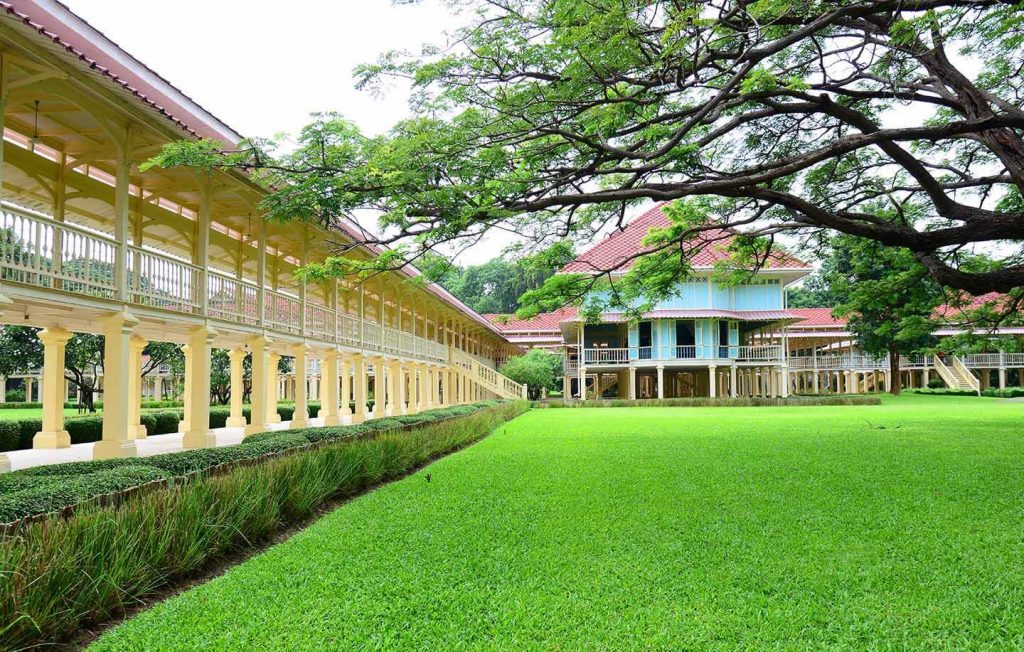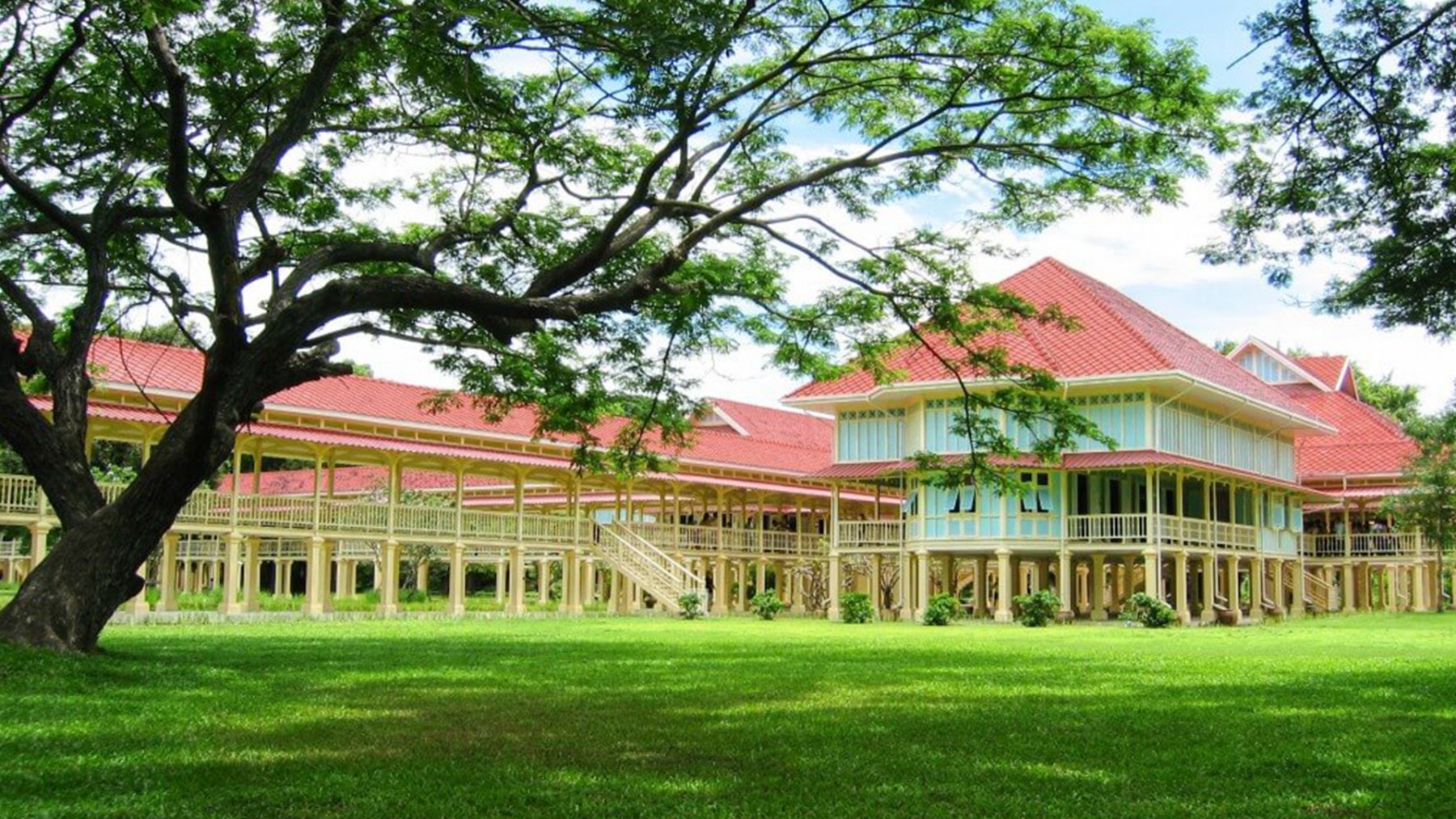Like many buildings in Hua Hin, this Thai-Victorian style summer seaside palace was constructed in the early 1920s during the reign of King Rama VI. It was designed by an Italian architect and built with golden teak from the demolished Hat Chao Samran Palace, with lots of verandas, latticework and high ceilings to keep the structure cool during summer.

The Setting
Set on a vast manicured landscape fronting idyllic Cha Am Beach, the candy-coloured mansion comprises three one-storey pavilions with more than 1,000 pillars supporting them to avoid flood damage. All buildings are connected by covered boardwalks, designed to catch cool breezes from all directions, leading all the way to the beach front.
Period Splendour When approached from afar, the sight of the palace against the backdrop of white sands and cerulean-blue sea conjures up an image of a place suspended in time. You can almost imagine court servants scurrying down the corridors, going about their daily business, while the king and royal consorts take residence in the royal chambers.
Back in those days, each of the three buildings had clearly defined functions. A series of halls located in the south wing served as the residence of the king and royal consorts. These consisted of royal sitting and relaxing rooms, the royal chamber of the princess consort and a reading room. The north wing served as accommodation for court servants, and the two-story open pavilion or ‘Samoson Sewakamat Hall’ served as the official venue for royal functions as well as for theatre and entertainment.






